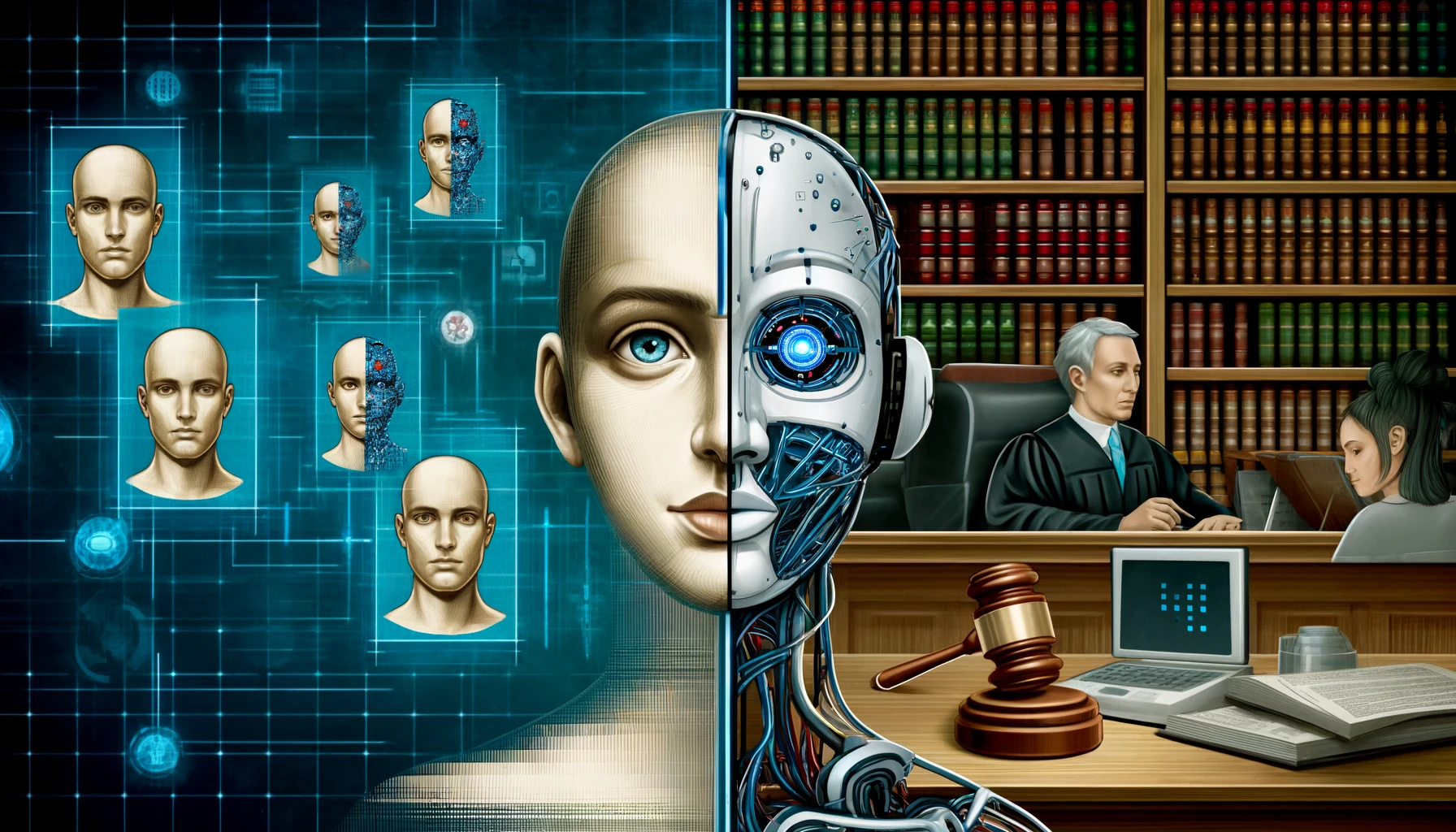What Are the Legal Issues Surrounding Deep Fakes?

Artificial Intelligence (AI) might offer many benefits to individuals, businesses, and society. However, it also brings heightened concern about unresolved issues surrounding the creation of AI-generated deep fakes.
What once required technical skill to accomplish, the act of accurately cloaking faces and voices has become so simple that virtually anyone can do it. Many deep fakes can be harmful and intrusive, which raises the issue of their legality.
What Is a Deep Fake?
Deep fakes are videos or audio clips that appear to be genuine content but are fake representations of a real human with the assistance of artificial intelligence. Deep fakes come in three main categories:
- Lip Sync: Having another person appear to say something they are not in video or audio content.
- Face Swap: Replacing one person’s face with another’s in video or photo content.
- Puppet Technique: Making a person move in ways they commonly don’t in video content.
Generative adversarial networks (GANs) create deep fakes using advanced algorithms that manipulate large datasets of videos, images, and sounds to create new, fake content that appears genuine.
Background on Deep Fakes
The term deep fake combines “deep,” taken from AI deep-learning technology, and “fake,” addressing that what is produced isn’t real. While the term might be new, there’s nothing novel about the manipulation of data.
Ancient Romans chiseled portraits and names off stone to permanently delete a person’s history and identity. Soviet leader Joseph Stalin used image editing and censorship to manipulate his persona in the early 20th century.
The advent of the computer age makes data manipulation much more accessible, with equally sinister intent. GANs were first introduced in 2014, consisting of several networks working together to produce synthetic data that closely resembles the real thing.
Deep fakes were initially used for entertaining and harmless purposes, such as inserting faces onto objects. However, the potential for misuse became greater as the technology advanced rapidly.
How Deep Fakes Are Harmful
Deep fake technology has several positive applications. For example, synthetic media has applications in education, accessibility, forensics, and the arts. However, the widespread availability of deepfake technology has opened it up to many harmful uses.
Deep fakes are used to damage reputations, manipulate public opinion, and spread false information. They can be employed to blackmail or harass individuals or businesses, disseminate fake pornographic content, and manipulate political elections.
Here are some examples of harmful deep fake usage:
- In 2019, an energy firm in the U.K. lost nearly $250,000 when its CEO fell victim to an AI-generated phone deepfake scam.
- In June 2019, a deep fake video of Mark Zuckerberg was posted to Instagram in which the “fake” CEO claimed how “great” it was to have billions of people’s data.
- In 2022, a deep fake video of Kyiv mayor Vitali Klitschko deceived several European politicians into joining a fake call to discuss Ukranian refugees.
- In April 2023, popular Big Brother reality TV star Kyland Young sued NeoCortex, Inc., the developer of Reface, a deep fake software program, claiming the product violates California’s right of publicity law.
- In October 2023, actor Tom Hanks warned fans about a fake ad for dental services featuring a fabricated image of his likeness, stating, “I have nothing to do with it.”
- In January 2024, social media sites were flooded with sexually explicit deep fake images of Taylor Swift, prompting X to actively remove the images, ban accounts, and temporarily stop users from searching for the superstar on the site.
How Are Deep Fakes Legal?
The harm deep fakes can cause has the potential to be far-reaching, leading to emotional, financial, and even physical consequences. So, how are deep fakes legal? In many cases, they’re not.
In some cases, a deep fake might be considered a form of protected speech, where an accused person claims First Amendment protection. This might be a valid defense if the deep fake was created for commentary, satire, or parody. However, civil cases are being filed to test these theories, and laws are being passed or proposed to add additional protections.
Some of the legal remedies that victims of deep fakes have include:
Trademark
Celebrities might be able to bring a trademark claim alleging “false endorsement” if a deep fake leads consumers to believe that the celebrity endorsed a product or service when they didn’t. The courts have interpreted the Lanham Act to support cases involving the nonconsensual use of a person’s “voice” or “persona” in this manner.
In addition to the Tom Hanks example, others have tried to take unfair advantage of celebrity influence for years. Actor Woody Allen prevailed in a Lanham Act claim (Allen v. National Video, Inc.) against a party that used a look-alike in an ad. If the deep fake has some form of commercial intent, this type of trademark claim is a possibility.
Copyright
Deep fakes that take advantage of copyrighted materials could face civil actions for copyright infringement. Also, websites, like social media platforms, could be forced to remove deep fakes that infringe on copyright per the Digital Millennium Copyright Act (DMCA). However, creators of deep fake content could claim “fair use,” which protects some use of copyrighted materials when used for things like criticism and news reporting.
State Law
Several states have passed laws to limit the harmful effects of deep fakes. Hawaii, Texas, Virginia, and Wyoming have criminalized pornographic deep fakes, while Texas and California permit civil actions. Also, Texas and California have passed laws restricting any deep fakes that could influence political campaigns.
Federal Law
No federal law currently exists that addresses deep fakes. However, the DEEP FAKES Accountability Act was introduced in Congress in 2019. It has received renewed attention this past year. If passed, the law would establish new criminal offenses related to the production of deep fakes and create civil penalties, allowing victims to bring legal action for damages.
What Is the Future of Deep Fake Technology?
While deep fake technology has some positive applications, its potential to perpetuate harm to others is substantial. From spoofed phone calls to faked videos of world leaders and celebrities, the need for action is growing.
The technology is still considered relatively new, so it will likely become more challenging to detect and combat in the future. As it stands, victims of deep fake technology have several legal remedies they can pursue, which mainly amount to civil actions against creators, websites, and internet service providers.










